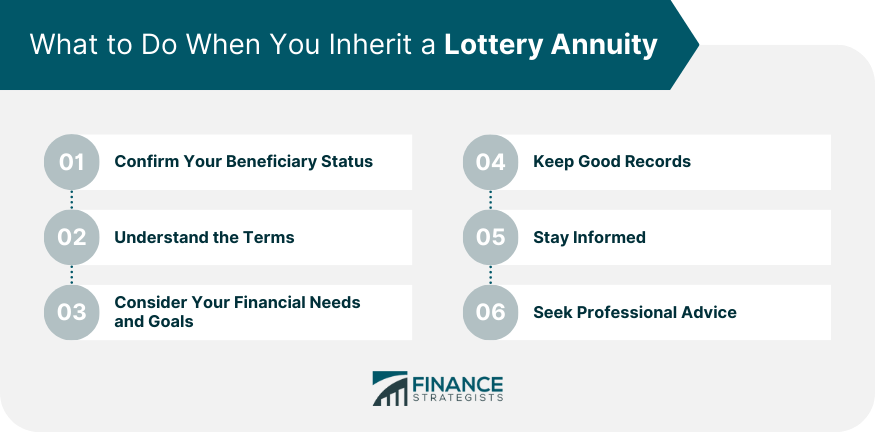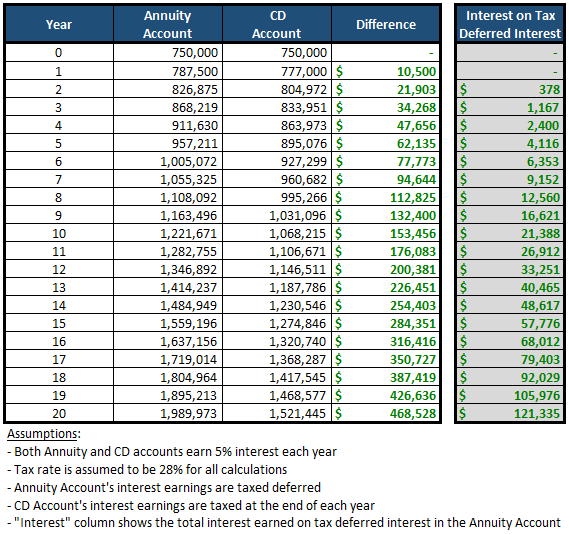All Categories
Featured
Table of Contents

Understanding the different death benefit options within your inherited annuity is important. Thoroughly review the agreement information or speak to an economic expert to determine the details terms and the most effective way to wage your inheritance. Once you acquire an annuity, you have a number of options for obtaining the money.
In some cases, you may be able to roll the annuity into an unique kind of specific retirement account (IRA). You can pick to obtain the whole staying balance of the annuity in a single repayment. This option offers instant access to the funds but features significant tax effects.

If the acquired annuity is a qualified annuity (that is, it's held within a tax-advantaged pension), you could be able to roll it over right into a new pension. You don't require to pay taxes on the surrendered amount. Beneficiaries can roll funds right into an acquired IRA, a distinct account especially created to hold assets acquired from a retirement strategy.
Tax on Annuity Income Riders death benefits for beneficiaries
Various other types of beneficiaries normally should withdraw all the funds within ten years of the owner's fatality. While you can not make additional contributions to the account, an acquired individual retirement account offers a beneficial benefit: Tax-deferred growth. Earnings within the inherited IRA gather tax-free till you begin taking withdrawals. When you do take withdrawals, you'll report annuity revenue similarly the plan participant would certainly have reported it, according to the internal revenue service.
This option gives a constant stream of earnings, which can be valuable for long-term monetary preparation. Typically, you need to start taking circulations no much more than one year after the proprietor's death.

As a recipient, you won't go through the 10 percent IRS very early withdrawal penalty if you're under age 59. Trying to calculate tax obligations on an inherited annuity can really feel intricate, yet the core concept focuses on whether the added funds were formerly taxed.: These annuities are moneyed with after-tax dollars, so the beneficiary typically doesn't owe tax obligations on the initial payments, but any kind of earnings built up within the account that are dispersed go through regular income tax.
Tax consequences of inheriting a Annuity Rates
There are exceptions for spouses that acquire certified annuities. They can typically roll the funds into their very own IRA and defer taxes on future withdrawals. In either case, at the end of the year the annuity firm will submit a Form 1099-R that shows how a lot, if any type of, of that tax year's circulation is taxable.
These taxes target the deceased's total estate, not simply the annuity. These taxes commonly just effect very big estates, so for most beneficiaries, the emphasis must be on the revenue tax obligation ramifications of the annuity.
Is an inherited Immediate Annuities taxable
Tax Treatment Upon Fatality The tax treatment of an annuity's fatality and survivor benefits is can be fairly complicated. Upon a contractholder's (or annuitant's) fatality, the annuity might go through both earnings taxation and inheritance tax. There are different tax obligation treatments relying on who the recipient is, whether the owner annuitized the account, the payment technique picked by the beneficiary, etc.
Estate Taxes The federal estate tax is a very progressive tax (there are lots of tax brackets, each with a higher price) with rates as high as 55% for huge estates. Upon death, the internal revenue service will include all residential property over which the decedent had control at the time of death.
Any type of tax obligation in extra of the unified credit score schedules and payable 9 months after the decedent's death. The unified credit rating will totally shelter relatively modest estates from this tax obligation. So for numerous clients, estate taxes may not be a vital concern. For bigger estates, nevertheless, inheritance tax can impose a huge worry.
This conversation will certainly concentrate on the estate tax therapy of annuities. As held true throughout the contractholder's life time, the internal revenue service makes an essential difference between annuities held by a decedent that are in the accumulation phase and those that have gotten in the annuity (or payout) phase. If the annuity is in the accumulation phase, i.e., the decedent has actually not yet annuitized the contract; the full survivor benefit ensured by the agreement (consisting of any type of improved death benefits) will certainly be included in the taxable estate.
Fixed Income Annuities death benefit tax
Example 1: Dorothy possessed a dealt with annuity agreement released by ABC Annuity Firm at the time of her fatality. When she annuitized the agreement twelve years back, she selected a life annuity with 15-year period certain. The annuity has actually been paying her $1,200 each month. Because the contract assurances settlements for a minimum of 15 years, this leaves three years of settlements to be made to her child, Ron, her designated recipient (Long-term annuities).

That value will be included in Dorothy's estate for tax obligation purposes. Assume instead, that Dorothy annuitized this agreement 18 years earlier. At the time of her death she had actually outlasted the 15-year duration specific. Upon her death, the settlements quit-- there is nothing to be paid to Ron, so there is absolutely nothing to include in her estate.
Two years ago he annuitized the account picking a lifetime with cash reimbursement payout alternative, calling his child Cindy as beneficiary. At the time of his fatality, there was $40,000 principal continuing to be in the contract. XYZ will pay Cindy the $40,000 and Ed's administrator will certainly include that amount on Ed's inheritance tax return.
Given That Geraldine and Miles were married, the benefits payable to Geraldine stand for residential property passing to a making it through spouse. Guaranteed annuities. The estate will have the ability to utilize the unlimited marriage deduction to stay clear of taxation of these annuity benefits (the worth of the advantages will certainly be detailed on the inheritance tax kind, in addition to a countering marriage deduction)
Inherited Deferred Annuities taxation rules
In this case, Miles' estate would certainly consist of the worth of the continuing to be annuity settlements, yet there would be no marriage deduction to counter that incorporation. The exact same would use if this were Gerald and Miles, a same-sex pair. Please note that the annuity's continuing to be worth is identified at the time of fatality.
:max_bytes(150000):strip_icc()/Death-taxes_sketch_final-422a2456bff64e4da2f9dabb41c64ad9.png)
Annuity contracts can be either "annuitant-driven" or "owner-driven". These terms describe whose death will activate repayment of survivor benefit. if the contract pays survivor benefit upon the fatality of the annuitant, it is an annuitant-driven contract. If the survivor benefit is payable upon the death of the contractholder, it is an owner-driven agreement.
There are circumstances in which one person has the agreement, and the gauging life (the annuitant) is somebody else. It would certainly be wonderful to think that a particular contract is either owner-driven or annuitant-driven, yet it is not that straightforward. All annuity agreements released given that January 18, 1985 are owner-driven due to the fact that no annuity contracts issued given that then will be given tax-deferred condition unless it includes language that sets off a payment upon the contractholder's fatality.
Table of Contents
Latest Posts
Decoding How Investment Plans Work Key Insights on Variable Annuity Vs Fixed Annuity What Is Fixed Income Annuity Vs Variable Annuity? Features of Variable Vs Fixed Annuity Why Variable Vs Fixed Annui
Analyzing Strategic Retirement Planning Key Insights on Your Financial Future Breaking Down the Basics of Investment Plans Features of Annuities Variable Vs Fixed Why Annuities Fixed Vs Variable Matte
Exploring the Basics of Retirement Options Key Insights on Your Financial Future Defining the Right Financial Strategy Pros and Cons of Various Financial Options Why Fixed Income Annuity Vs Variable A
More
Latest Posts